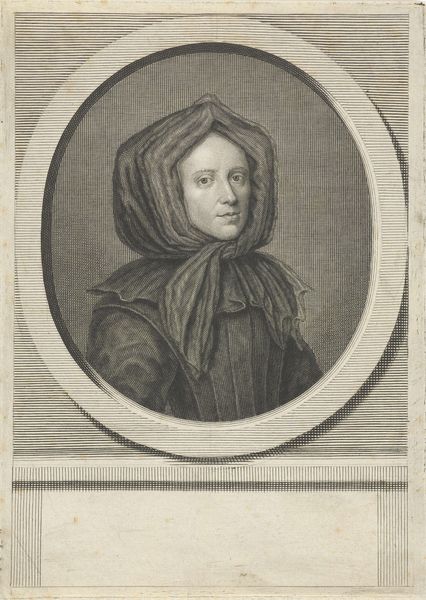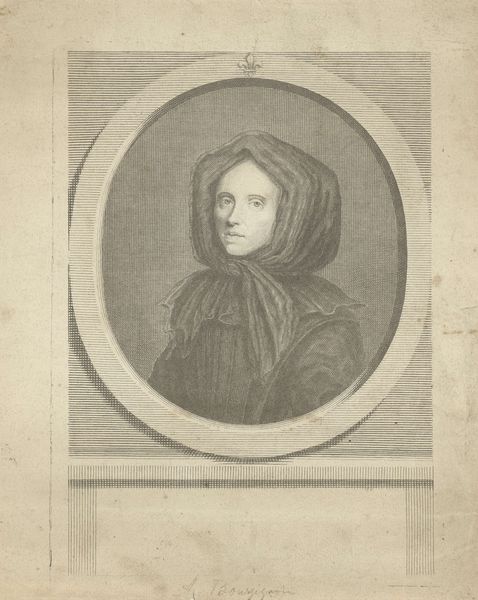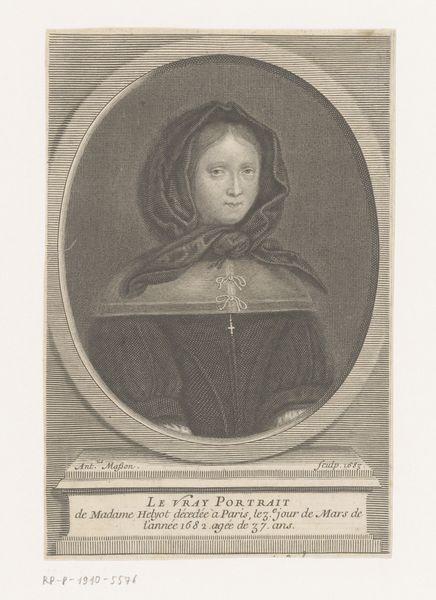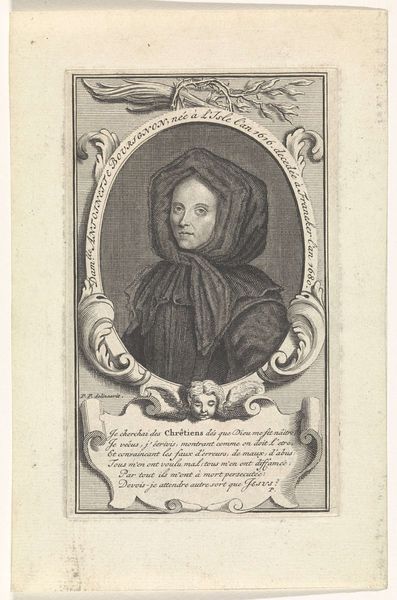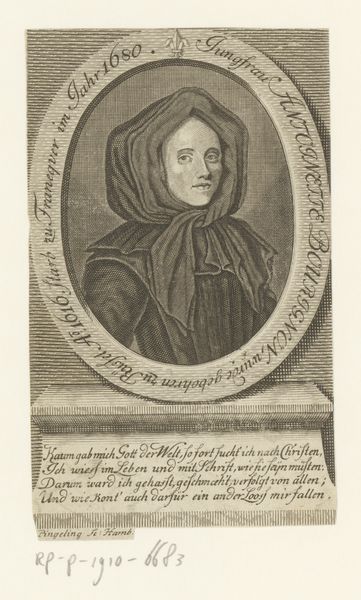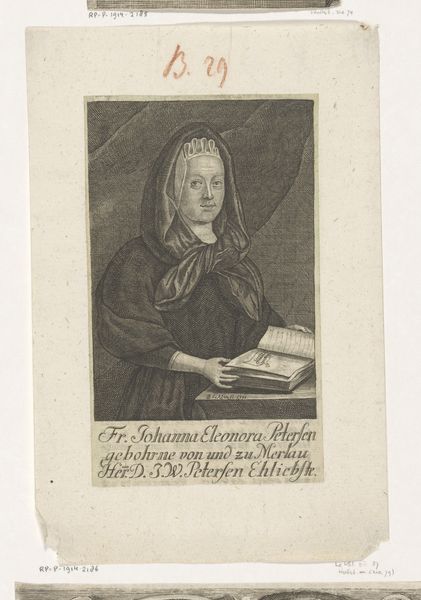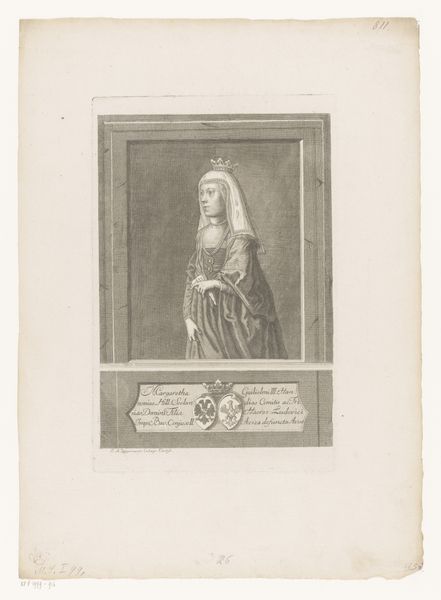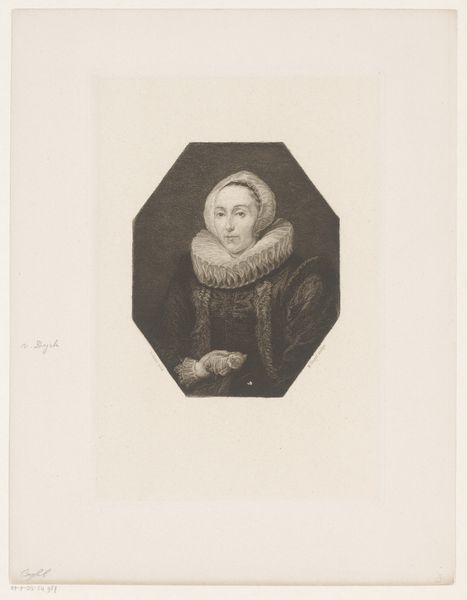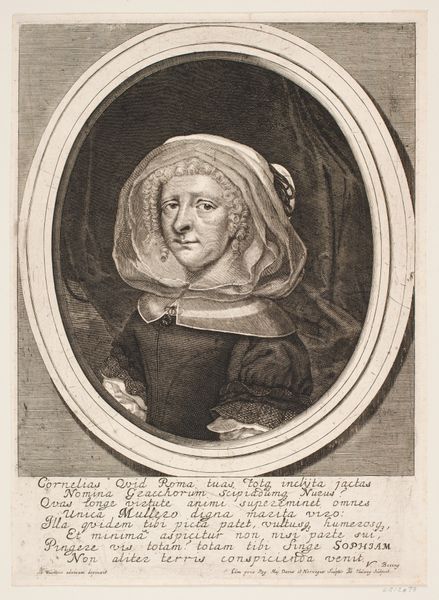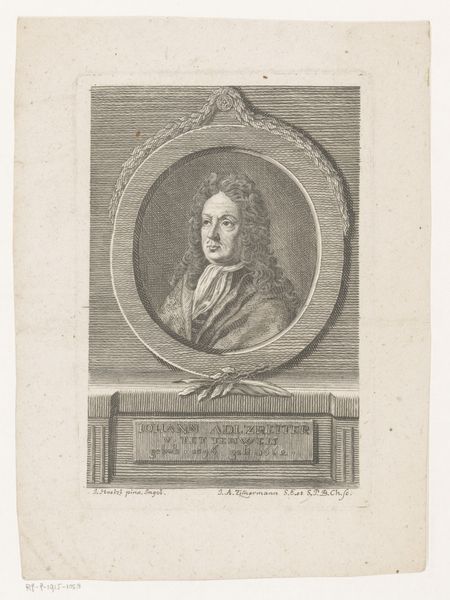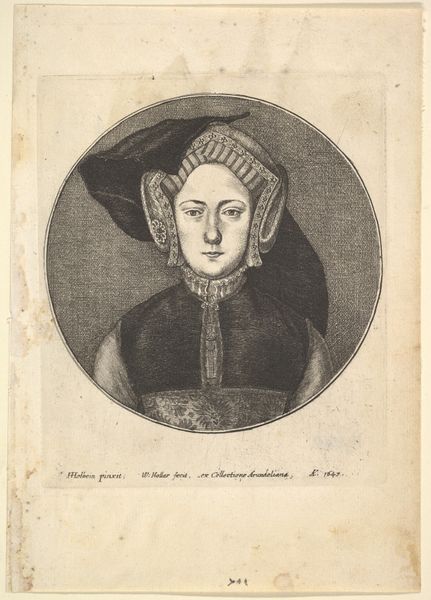
engraving
#
portrait
#
baroque
#
figuration
#
line
#
engraving
Dimensions: height 135 mm, width 105 mm
Copyright: Rijks Museum: Open Domain
Editor: This is a portrait of Antoinette Bourignon, made between 1704 and 1765 by Johann Friedrich Schmidt, using engraving. The subject has an intense gaze and seems shrouded in shadows. How can we unpack some of the symbolism here? Curator: The shadows are key. Think of Caravaggio’s use of *chiaroscuro* – that interplay of light and darkness. Here, darkness symbolizes the obscurity that often cloaks those deemed heretical or unconventional. Bourignon was a mystic. What does the darkness tell us about how society might have perceived her beliefs? Editor: Perhaps her individuality was seen as something dangerous? But her eyes… they are so piercing. Curator: Exactly. They engage directly with the viewer. Her gaze pierces through the layers of societal judgment. It's a statement of unwavering conviction, reflecting a deep personal connection to the divine that transcends orthodox religious structures. Her austere dress removes earthly vanity and underscores inner spiritual conviction, connecting to longstanding traditions of female mystics and religious thinkers across cultures. Editor: So even through what might be seen as a somber image, there's an assertion of spiritual strength? Curator: Precisely! This portrait captures that tension perfectly, symbolizing a woman who defied expectations and carved her own path, inviting the viewer to reconsider conventional narratives. How do you think contemporary audiences might see this in connection to modern themes, such as individuality? Editor: I guess the appeal to inner conviction remains timeless and relevant, especially given how digitized life impacts individuals and their pursuit of the spiritual self. I'll never see baroque portraiture the same way. Curator: Indeed, every detail carries weight, a testament to the enduring power of symbols and imagery.
Comments
No comments
Be the first to comment and join the conversation on the ultimate creative platform.
